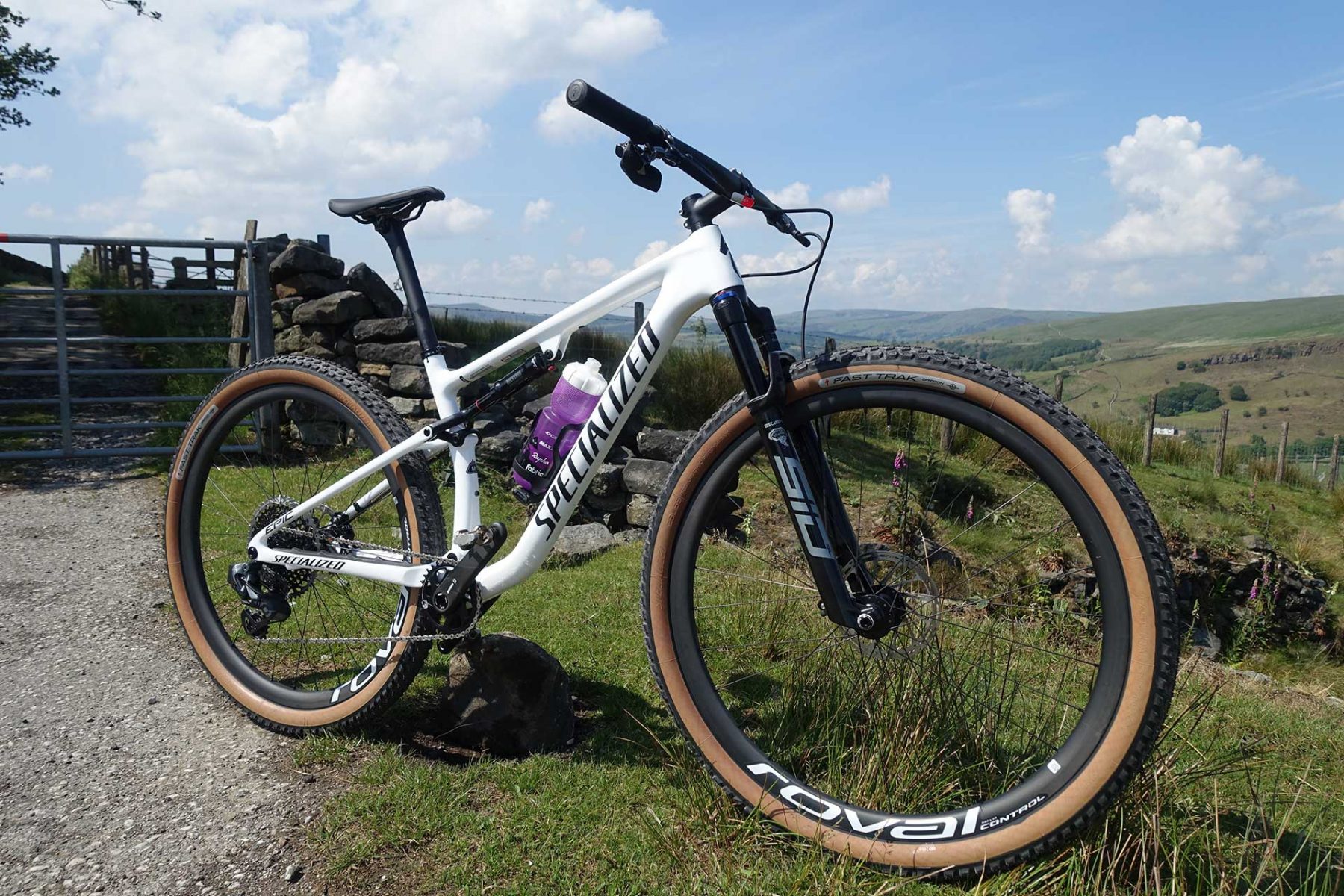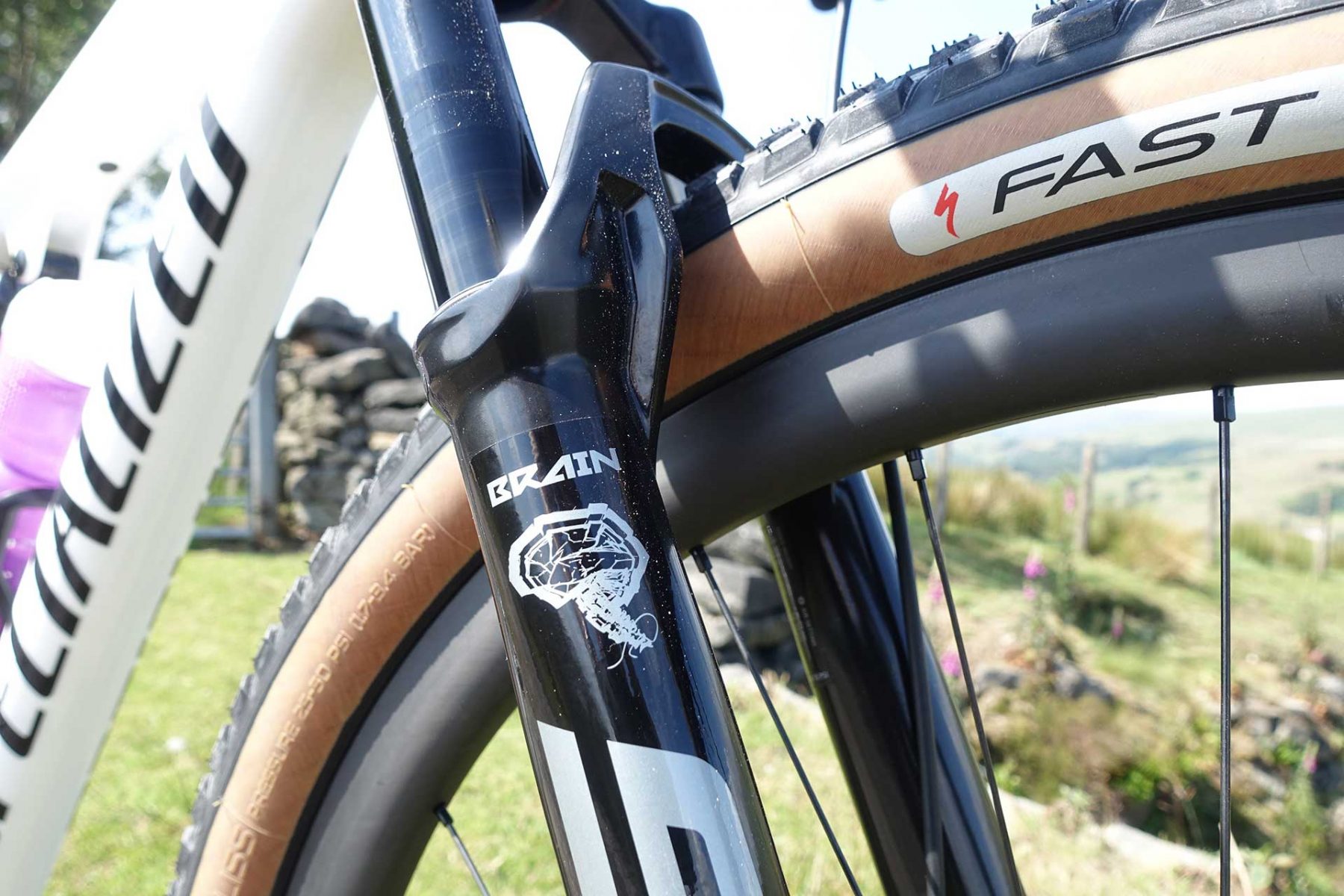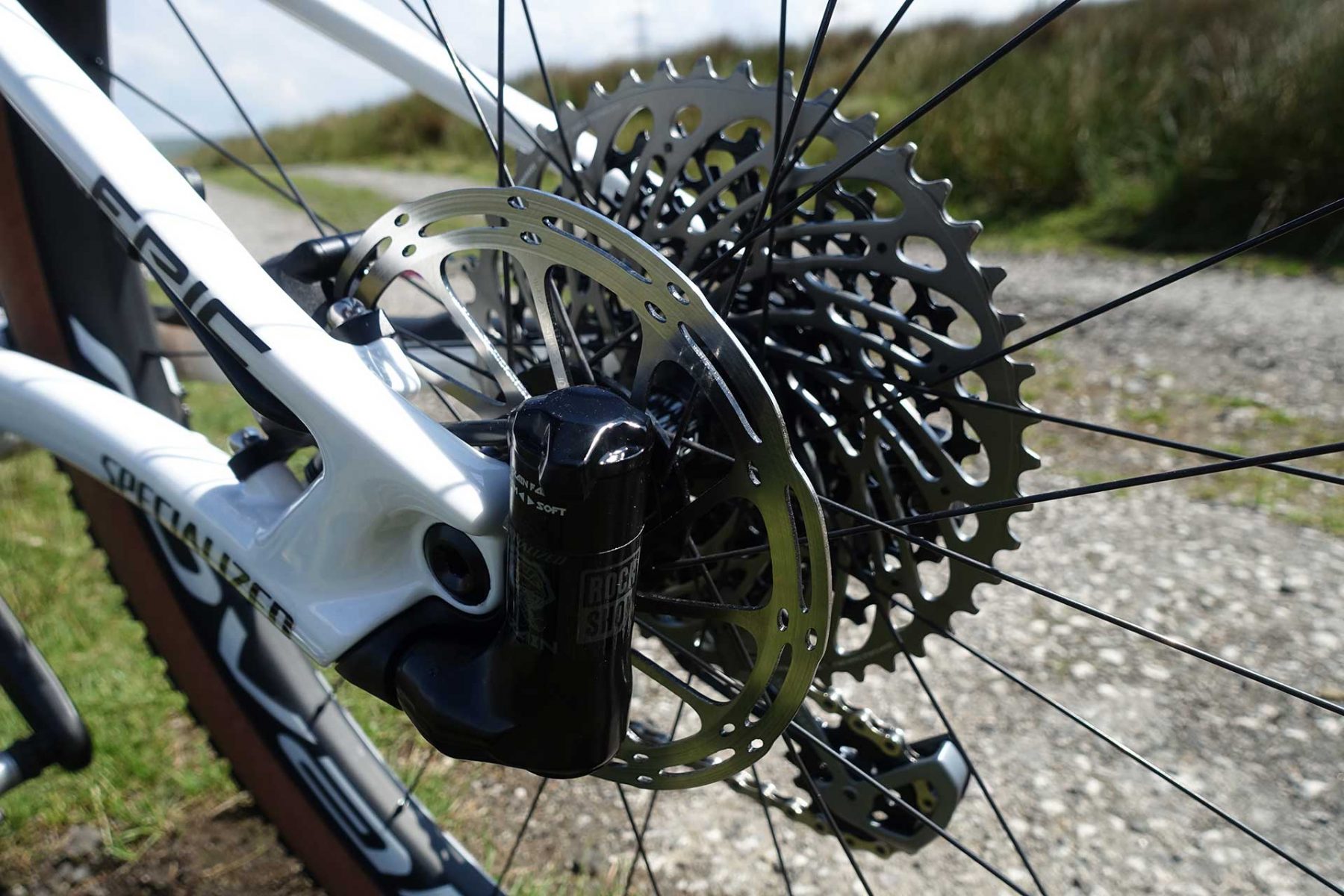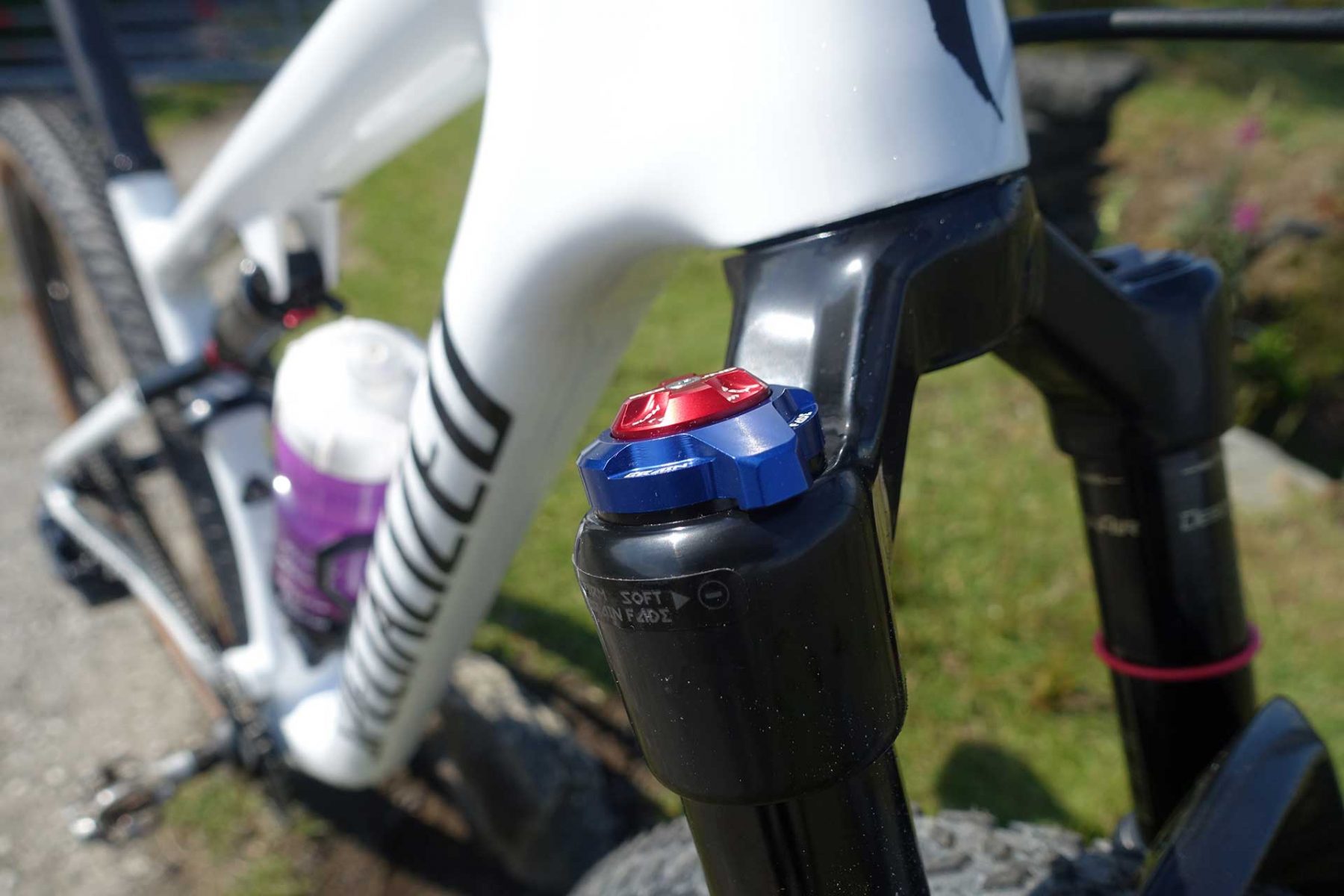If you've got a bike, you need a lock. Whether you are just wanting to deter…

Wheel this new Specialized Epic Pro out of the box and you’re immediately struck by how neat and purposeful it looks. Thanks to the SRAM AXS Eagle wireless shifting and a puritanical approach to dropper posts, there are only brake hoses coming from the bars. The bike looks low, long and lean – and lifting it up confirms a truly astonishing lack of weight. It’s barely more than 23lbs or 10kg. I’ve ridden road bikes heavier than that.
Houston, I think we’re in trouble. And that trouble is that the Specialized Epic Pro most definitely isn’t a bike for cruising around on. It’s not even a bike for riding fast – there’s a whole range of Epic EVOs for that. No, the one purpose of the Epic Pro is flat-out racing. It’s not necessarily fussed where or what – whether that be a Cape Epic or a UCI World Cup short course – but it’s built to race. Everything about the bike – the spec, the tyres and the attitude, is set up for between-the-tapes thrashing.
All I needed to do was to fit the (supplied) tubeless valves, add some sealant to the minimally treaded Fast Trak tyres, fit a cage and SWAT tool and head out into the hills.

All I needed to do was to fit the (supplied) tubeless valves, add some sealant to the minimally treaded Fast Trak tyres, fit a cage and SWAT tool and head out into the hills.
I’m 5ft 9in or so and the fit on a medium Epic is spot on. Normally, I’m in the funny world between medium and large, but this medium fits well. The 750mm (760 with grips) bars and shortish 60mm stem put everything where you want it to be.
The Ride
The ride of the Specialized Epic BRAIN fork and rear suspension is a very particular one. If you’ve never experienced it, it can feel unnerving as you can often feel the moment where that stiff, pedalling platform gives way to the plush suspension beneath, like biting through the crisp chocolate of a Magnum to get to the soft ice cream below it.

At worst, the BRAIN’s particular feel can make you think that the headset is loose (and if it is, it can be hard to realise at first) and you keep feeling that firm ‘clonk’ as the rear suspension starts working. Setting up pressures and sag can be hard as the BRAIN is never off, though it can be dialled back. However, once you’ve got the bike set up to your liking and you’re used to the feel of the bike, I find that the BRAIN is very easy to get used to – and equally easy to accommodate in your riding to where every time you do notice it, your thoughts are of ‘Wow, that means my bike has been as efficient as a hardtail up to now – and here is where I get to benefit from 100mm of suspension’. And it’s that mindset that flips a switch on your appreciation of the BRAIN.
Whatever the ‘enduro’ folks reckon, racing a cross country bike fast is a skill in itself. Flat out XC racing, on the limit of your fitness, on the limit of your tyres and using as much of the bike’s performance as possible doesn’t leave much room for error. This is no time to be wondering if you unlocked your fork, or flailing around trying to reach for a lockout lever by your knees. The Epic Pro takes all of those thoughts away.

Tarmac climb? Great! Get out of the saddle and honk. Undulating singletrack? Get shredding – if it’s bumpy enough, the bike will start working – but you’re probably just being soft, so get back on those pedals! Big descent coming up? Great, your bike is already ready for it, so you just need to pick a line.
This was one of the real shocks on the new Epic Pro. Descending on the bike is incredible. It’s no magic carpet, and a day of hard riding will leave your arms and shoulders feeling it, but you’ll have gone faster than you could imagine on a bike with ‘only’ 100mm of travel and no dropper post. The riding position, bar width, slack head angle and 44mm offset SID-with-BRAIN forks all combine to make for a super confident downhill machine.
Looking at the spec of the Epic Pro, it’s as high-level as a bike of its not-inconsiderable budget should have. SRAM’s AXS gearing gives lightning-fast shifting at the speed of a mouse click (though I would love a left hand lever for up/down ‘paddle shift’ operation) and battery life is measured in weeks rather than rides. Elsewhere, there’s not really much in the way of components to talk of! SRAM’s Level TLM two-pot brakes are great. I had to initially remove the levers to adjust the reach, but once that was done, they’ve been faultless. While the 160/160 keep tempting me to upgrade to a bigger front rotor, that’s just not racing. The 160mm rotors are all you’d need unless you were doing stage races in the Alps. The same goes for the minimally treaded Specialized Fast Trak tyres. In the generally dry weather we’ve had, the tyres are great – fast race tyres that haven’t given me any problems at all, despite some rocky trails and hamfisted line choice.

I was a little disappointed not to find the new Roval Control SL wheels on a bike at this price, but for the moment, those 1240g beauties are limited edition and only appear on the top-of-the-shop S-Works model at north of ten grand a bike. I made do with the existing Roval carbon Control wheels, that offer fast engagement and a wide, deep tubeless rim profile. Even running 20/24psi, I had no issues whatsoever.
The ‘modern’ profile, short nosed Specialized saddle is initially a little odd feeling, but it soon disappears under you. Specialized makes a lot of other great saddles if you don’t get on with it. And the carbon post is a thing of beauty. No, it doesn’t go up and down with a lever. As I mentioned earlier, if you’re doing a multi-day stage race like the Trans Maurienne http://www.transmaurienne-vanoise.com then add a dropper, bigger rotors and maybe a chunkier front tyre.
Overall
XC racing has changed over the years – in terms of terrain, length and specialism. Courses have got rougher and steeper, often with ‘built’ obstacles like drops, steps and rock gardens to negotiate. Cross country races don’t see many hungover trail riders lining up at the start. Everyone there to race is there to race.
What hasn’t changed is that riders are still pushing hard to race as fast as possible – as fast as their bikes and bodies will allow. The new 2021 Specialized Epic Pro is built for this kind of riding – and with its geometry, with the seamless way in which the BRAIN suspension works and with its pared down, minimal weight and components – it lets you do that even faster than ever.
The only trouble, now, is that you have zero excuses.
Three things that could be improved on the Epic Pro
- You may want some more knobbles on the front tyre for typical UK riding.
- Unless you have a wireless dropper, adding one for a one-off event is going to be a right pain to do with internal routing.
- Er… Better lungs? The price is steep, but we’re not going to criticise it for that.
Three things I love about the Epic Pro:
- The sheer speed. On/off road, it’s no nonsense performance
- The Brain. Analogue, battery free and it simply works
- The surprising downhill speed and sorted geometry
For more details, see specialized.com
More Reviews
Review Info
| Brand: | Specialized |
| Product: | Epic Pro |
| From: | Specialized.com |
| Price: | £7499 |
| Tested: | by Chipps for 120km |
Comments (7)
Leave Reply
Post Comment

That looks delightful. I’d have it in a heartbeat.
Skin walls though? Hideous, they’d be off in seconds. And some Contis thrown on.
Like that a lot.
I can’t say for sure, Eddiebaby, but I’d reckon the skinwalls are 0.4% lighter, or something… therefore they’re going on!
Does look amazing. Brain’s been going ages now!
How things change, HA similar to my Mk1 SC Nomad!
Nice review!
Does look amazing, just need to justify £10k on a bike now….
looks nice but white is a bit of a stupid colour for a UK bike but I suppose that if it comes out only to race that won’t matter